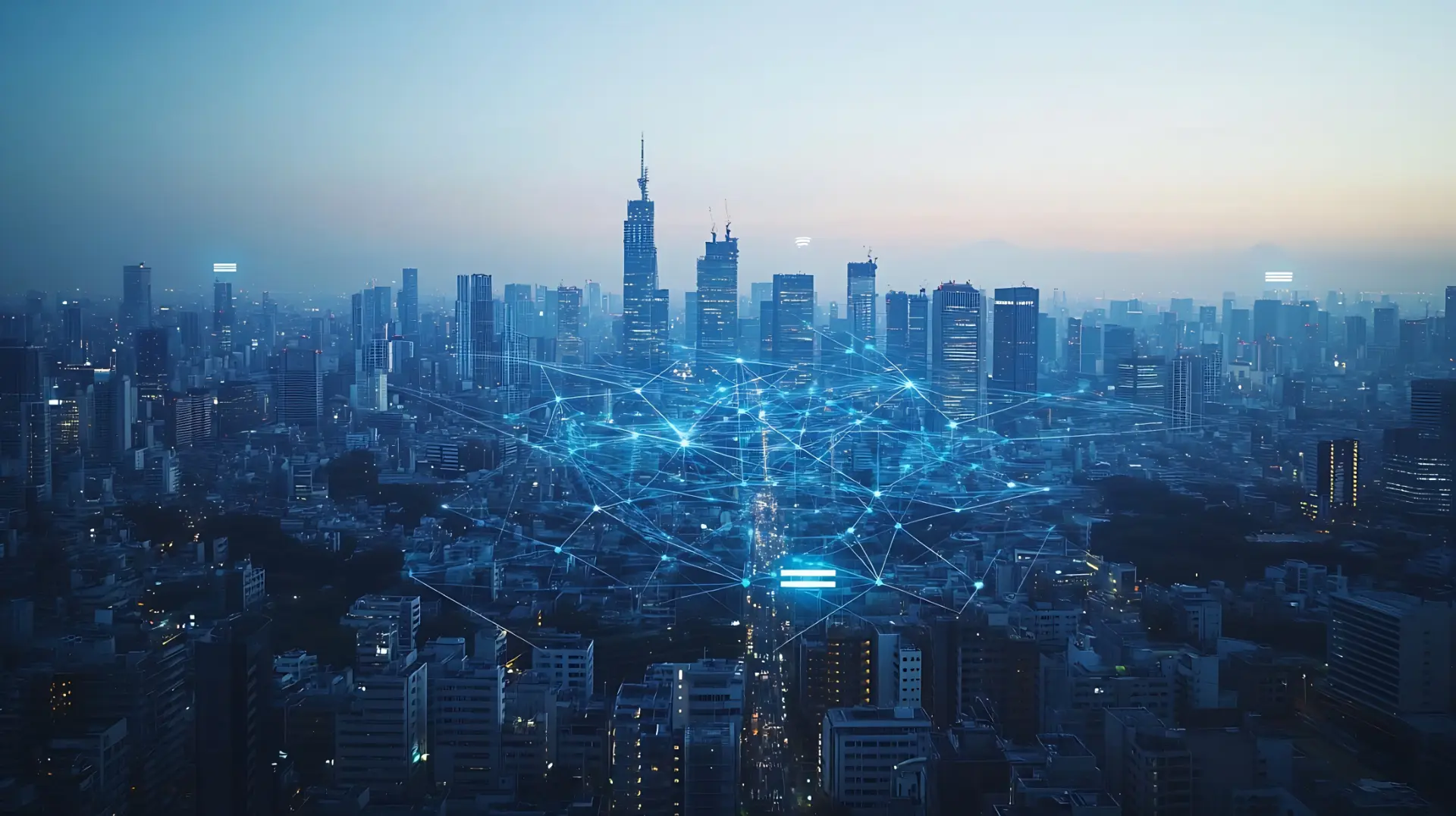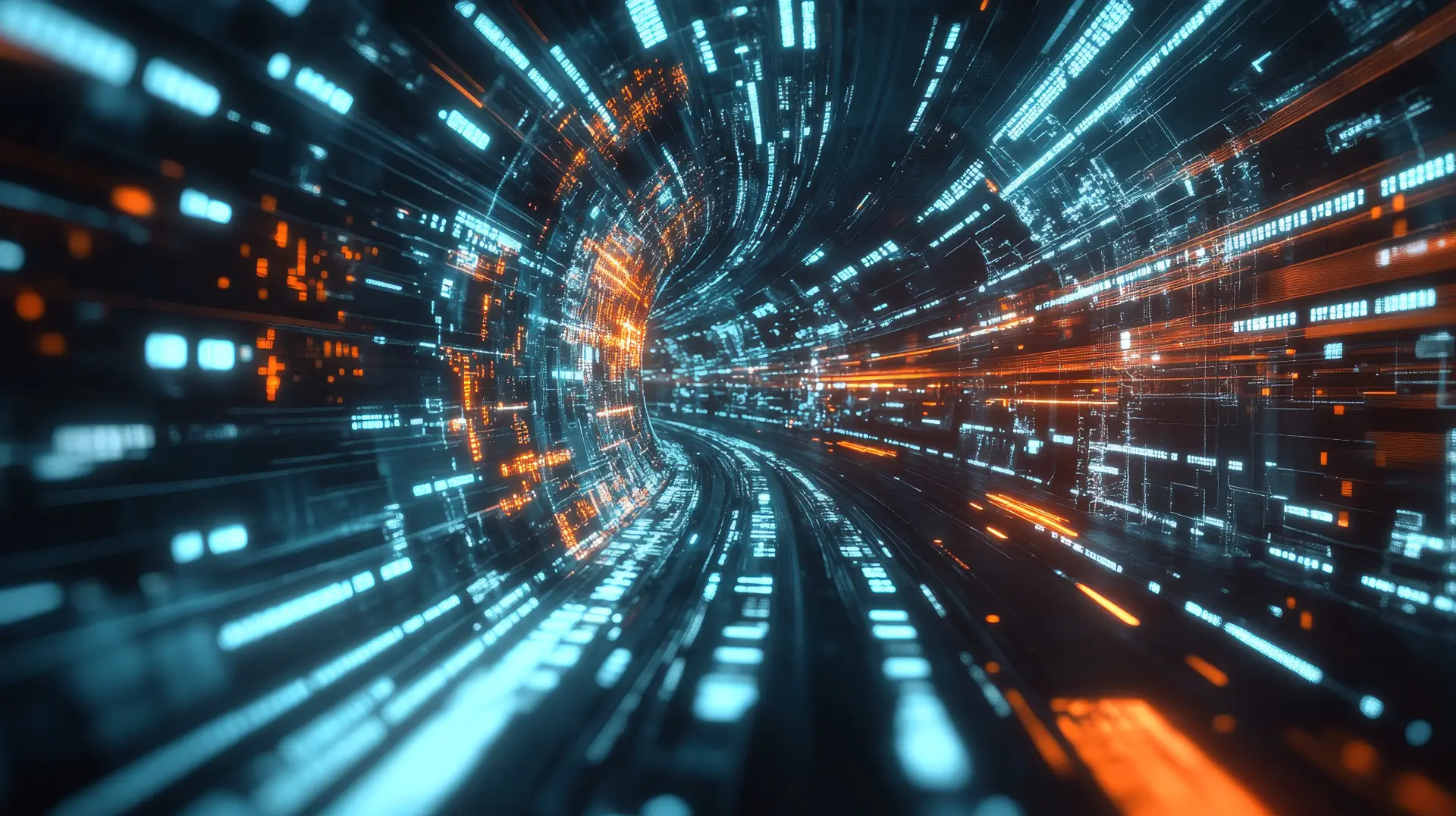Table of contents
- What is 5G and how does it work
- Difference between 4G and 5G: not just high speed
- General features and performance of 5G
- 5G Standard: the international scenario
- Interferences and technical challenges
- Cyber security in 5G: new challenges
5G technology represents one of the most important evolutionary leaps in the field of new technologies related to mobile networks in recent decades.
Faster, more reactive, more capable of connecting mobile devices simultaneously, the 5G network opens up new application scenarios in the industrial, healthcare, urban and domestic fields, enabling edge computing, artificial intelligence and Internet of Things ( IoT devices ) solutions that until yesterday were only hypotheses. But every leap forward brings new challenges: among these, those related to 5G cyber security stand out.
In this article we will explore in depth what 5G is, how it works, what are the differences compared to 4G, its technical characteristics, the application areas , but also how 5G can have risks, interferences and potential vulnerabilities in terms of cyber security.
The goal is to provide a complete and critical overview of a technology that, for better or for worse, is destined to transform the way we live and communicate.
What is 5G and how does it work
5G, short for fifth generation of cellular networks, is a set of technologies, protocols and architectures designed to progressively replace 4G/LTE, offering greater speed, ultra-low latency and higher bandwidth.
To understand how 5G works , we need to imagine a completely new infrastructure based on:
- Millimeter radio waves (mmWave), shorter than those used by previous generations, but capable of carrying much more data;
- Massive MIMO (Multiple Input Multiple Output), or multiple antennas that increase data transmission capacity;
- Beamforming, which allows the signal to be directed towards specific devices;
- Network slicing, or the ability to “slice” the network into virtual portions dedicated to different uses, such as autonomous vehicles, augmented reality or corporate networks.
5G is not just a new generation of mobile network: it is a platform for the digital ecosystem of the future.
Difference between 4G and 5G: not just high speed
Many people think that the difference between 4G and 5G is only in speed, but this is not the case. If 4G was the enabler of the mobile internet economy, 5G offers a real revolution in interconnection. The main differences are:
- Speed
While 4G reaches theoretical peaks of around 1 Gbps, 5G can exceed 10 Gbps. - Latency
4G has an average latency of 30-50ms; 5G aims to go below 5ms. - Number of connected devices
With 5G, it is possible to connect millions of mobile and IoT devices per square kilometer. - Reliability
The new 5G architecture enables ultra-reliable communications, even in critical contexts. - Energy efficiency
It is designed to consume less energy in mobile phones and devices in general, extending their lifespan.
These differences make 5G an ideal candidate to support applications such as autonomous driving, telemedicine, smart factories, and smart cities.
General features and performance of 5G
The general characteristics of 5G are multiple and determine its incredible performance:
- High network capacity, up to 100 times that of 4G
- Ultra-Reliable, Low-Latency Communications (URLLC)
- Massive Device-to-Device Communications (mMTC)
- Download speeds over 10 Gbps
- Support for new frequency bands (including mmWave)
These performances come from the adoption of advanced technologies and the possibility of bringing the cloud closer to the edge of the network thanks to edge computing.

5G Standard: the international scenario
The 5G standards are defined by 3GPP (3rd Generation Partnership Project), which has released the specifications of Release 15, 16 and 17. The main standards include:
- NR (New Radio)
The main radio standard for 5G - NSA (Non-Standalone) and SA (Standalone)
Hybrid or Native 5G Architectures - 5G Core (5GC)
The heart of the network that enables slicing, mobility, advanced security
Global adoption is patchy: while it is already well established in some Asian and North American countries, distribution is still expanding in Europe.
Interferences and technical challenges
5G interference is not only a technical challenge, but also a political and industrial one. The millimeter waves used by 5G are more sensitive to obstacles and atmospheric conditions. This requires:
- A densification of antennas (small cell)
- New distributed network architectures
- Greater coordination in spectrum management
Additionally, there are concerns about potential interference with other radio systems, such as weather radar or satellite bands.
Cyber security in 5G: new challenges
The arrival of 5G is not just a technological innovation for data transmission: it introduces a real architectural revolution that brings with it new attack surfaces, new usage scenarios and systemic risks that until now were marginal or even absent.
Unlike previous networks, 5G is natively cloud-based , decentralized and tightly integrated with environments such as edge computing , artificial intelligence and IoT devices . This makes it both more powerful and more vulnerable .
Let’s now take a detailed look at the main challenges for 5G cyber security.
1. Expansion of the attack surface
5G allows millions of heterogeneous devices to be connected per square kilometer: sensors, cameras, cars, smartphones, robots, biomedical devices.
Every new node in the network is a possible point of compromise. As the number of connected mobile devices increases, the attack surface also increases , that is, the number of entrances that an attacker can try to exploit to gain access or cause disruptions.
Practical example
An attacker could compromise a single poorly protected environmental sensor and, from there, attempt a lateral escalation to more critical systems, such as municipal servers, transportation infrastructure, or hospitals connected via slices.
2. Unreliable supply chain and devices
One of the most complex problems is that of the supply chain. 5G networks rely on a vast ecosystem of hardware, software and firmware suppliers.
Radio modules, antennas, chipsets, modems, embedded operating systems: each component can contain backdoors , zero-day vulnerabilities or malicious firmware injected already during the production or update phase.
The risk is not theoretical. The National Cyber Security Agency (NCSA) and the US NIST have repeatedly called attention to the issue of hardware supply chain security , especially in contexts such as 5G networks for defense or public transportation.
3. Virtualized architectures and slicing: more flexibility, more risk
5G allows the creation, through network slicing, of true isolated virtual networks dedicated to specific functions: one slice for self-driving vehicles, one for healthcare, one for corporate communications.
However, if the virtual isolation is not well configured or bugged, an attacker who compromises one slice can potentially gain access to data or services in the others.
This scenario, called an inter-slice attack , is extremely dangerous: just think about what would happen if a malicious app in the gaming slice managed to intercept data from the hospital slice.
Another risk is that 5G architectures are based on virtualized network functions (VNFs) and containerized network functions (CNFs), often orchestrated with open source technologies such as Kubernetes.
If these infrastructures are not updated or monitored, they become the ideal target for container escape attacks , privilege escalation, and lateral movement between virtual nodes.
4. Protocol and reporting: SS7 attacks and new risks
Signaling protocols (i.e. signaling and authentication between devices and the network) in 5G still derive from those of 4G and 3G, such as SS7, GTP and Diameter. Some of these are notoriously vulnerable to spoofing, interception (IMSI catching) and geographic tracking of users.
The transition to IP-based protocols and the introduction of 5G Core improves the situation, but still leaves open scenarios for:
- Downgrade attack
Forcing a 5G device to use a less secure 4G connection. - Fake base stations
Fake antennas that pretend to be legitimate and collect user data. - Denial of Service via signaling overload
Saturation of signaling channels to block access to critical services.
5. Edge computing: a weak point in distributed security
One of the main innovations of 5G is the push towards edge computing , that is, processing data close to the source, in local nodes of the network, rather than in the central cloud. This ensures low latency and high performance.
But decentralization also means multiplying critical access points , each of which can be attacked. Edge nodes, if not properly monitored, can be compromised for:
- Access sensitive data that has not yet been encrypted
- Executing hidden malicious code in microservices
- Compromising container-based orchestration mechanisms
Perimeter protection, already weak in the cloud, becomes even more fragile at the edge.
6. Artificial Intelligence: a tool for defense but also for attack
In the 5G context, AI plays a key role in dynamic traffic management, anomaly detection, energy consumption optimization, and predictive attack analysis.
But the same AI can be used by malicious actors to:
- Create adaptive phishing and malware that can change behavior to evade defenses
- Execute mass-scale automated attacks against 5G-connected IoT devices
- Generate voice or visual deepfakes to fool biometric systems or human operators
AI models in mobile devices can also be manipulated using data poisoning techniques or adversarial attacks .
7. Authentication and encryption: not yet future-proof
5G introduces authentication mechanisms based on 5G-AKA (Authentication and Key Agreement) and advanced encryptions, such as 128-NEA and 256-NEA (New Encryption Algorithm), to protect data transmission.
However, the end-to-end protection is not guaranteed for all segments, and gray areas remain, such as:
- Data transmission between edge nodes and central cloud
- Communication between different slices
- Unencrypted metadata, which can reveal users’ habits or movements
With the advent of quantum computing , these encryptions will be further challenged: this is why research into post-quantum algorithms has become crucial.
